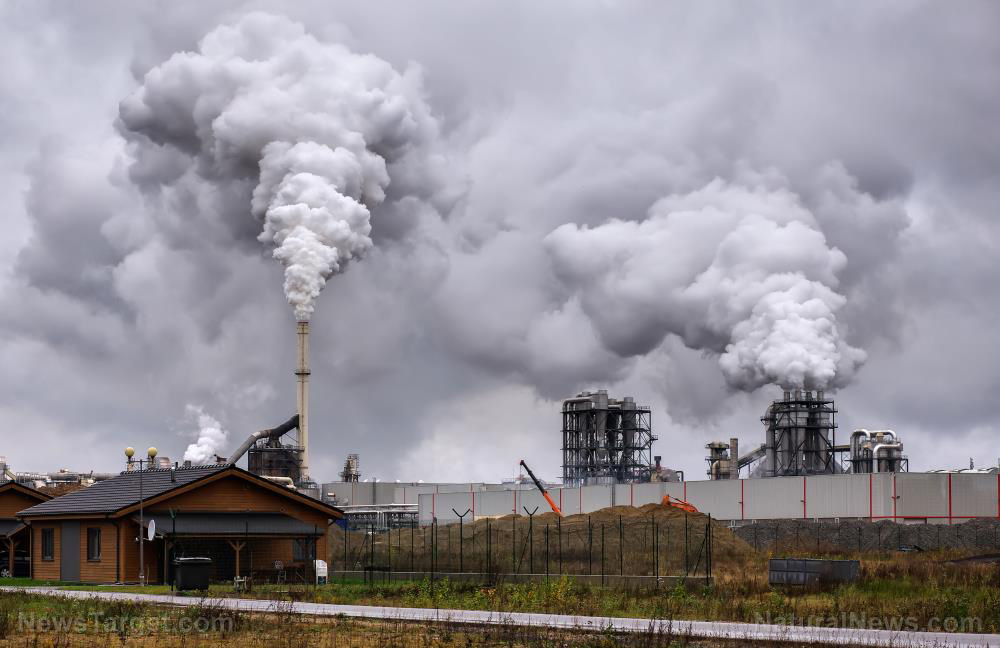A regulatory reversal: Trump EPA halts plan to expose true industrial pollution
10/31/2025 / By Willow Tohi

- A 2023 EPA program revealed that industrial facilities have been drastically underestimating their emissions of cancer-causing chemicals, with real levels often dozens of times higher than reported.
- The Biden administration subsequently finalized rules requiring over 130 chemical plants, coke ovens and steel mills to install permanent fenceline monitors and reduce emissions.
- The Trump administration has halted these rules, initiating a rollback and granting two-year compliance exemptions to dozens of facilities.
- This regulatory reversal leaves millions of Americans, particularly in industrial clusters in Texas and Louisiana, facing significantly higher cancer risks than previously known.
- The decision prioritizes corporate flexibility over verifiable data and public health, undermining a proven method for accountability.
In a decisive move that has stunned environmental advocates and community groups, the Trump administration has halted a landmark Environmental Protection Agency (EPA) initiative designed to force corporate transparency and significantly reduce cancer-causing air pollution. The action, taken shortly after the president’s inauguration, stops a plan that would have required more than 130 industrial facilities to install permanent air monitors and comply with stringent new emission standards. This reversal, which includes granting two-year exemptions to dozens of plants, effectively sidelines a data-driven solution to a decades-old problem: the vast underestimation of toxic emissions by industry, leaving millions of Americans in the dark about the true health risks in the air they breathe.
A system built on flawed estimates
For generations, the EPA has tracked dangerous industrial emissions not through direct measurement but through a self-reporting system that allowed companies to estimate their pollution. This system relied on “emission factors”—generic estimates of pollution from specific industrial processes—that the EPA itself has acknowledged since the 1990s are often unreliable. The inherent flaw is that these factors assume consistent leakage rates across countless valves, pipes and flanges, a premise experts compare to assuming every cake bakes for exactly one hour regardless of the recipe or oven.
The stark failure of this honor system was laid bare in 2023. Under a temporary EPA program, 20 industrial facilities—including coke plants, chemical manufacturers and steel mills—were required to install fenceline monitors, devices placed on a plant’s property line that measure actual pollution in the air. The results, compiled by ProPublica, were unequivocal and alarming. In 97 percent of the data sets, real-world emissions were higher than the companies’ estimates, often catastrophically so. At U.S. Steel’s Clairton Coke Works near Pittsburgh, benzene levels were 37 times higher than reported. A Dow Chemical plant in Plaquemine, Louisiana, recorded levels of vinyl chloride 156 times higher than estimated.
The proven power of fenceline monitoring
Fenceline monitoring is not merely a theoretical solution; it has a demonstrated record of success. A similar program for petroleum refineries, implemented in 2015, required permanent benzene monitors. The result was not just transparency but a direct and sustained reduction in pollution, with benzene concentrations dropping an average of 30 percent as companies were forced to find and fix leaks. This approach shifts the burden of proof from regulatory modeling to on-the-ground reality, creating a continuous feedback loop that drives compliance and protects public health.
The Biden administration’s now-frozen rules were built on this proven model. For communities living in the shadow of these plants, the proposed regulations represented a long-overdue step toward environmental justice and corporate accountability. The EPA estimated the new rules would have slashed the number of people facing an unacceptable cancer risk from chemical plant emissions by 97 percent, from 90,000 to just 3,000. The affected facilities are nationwide, but major clusters are located in the industrial heartlands of Texas and Louisiana, areas already burdened with some of the nation’s highest cancer risks from air pollution.
A conservative case for accountability sidelined
The rationale for halting these rules appears rooted in a deregulatory zeal that places corporate convenience above measurable public good and fiscal responsibility. While industry opponents argued the requirements were too costly and threatened competitiveness, the EPA estimated annual fenceline monitoring costs at approximately $107,000 per coke plant—a fraction of the financial reserves of a company like U.S. Steel, which reported $1.4 billion in cash at the end of 2024. The true cost to industry would have come from the necessary investments to repair the pervasive leaks the monitors would expose.
This decision represents a fundamental departure from conservative principles of localism and accountability. It centralizes power in Washington to override a data-driven process that would have empowered local communities with information about their own air quality. It privileges corporate flexibility over the fiscal responsibility of citizens who bear the healthcare costs of pollution-induced illnesses. By blocking transparency, the administration prevents the free market from accurately assessing corporate environmental performance and allows a known public health threat to continue unabated.
The price of inaction
The consequences of this regulatory rollback are both profound and personal. For residents in places like Clairton, Pennsylvania, or Louisiana’s “Cancer Alley,” the decision means a continuation of the status quo—an invisible, unchecked assault of carcinogens. It means that the “discrepancy” acknowledged by the EPA will remain unexplored and unaddressed. The move protects a system that has demonstrably failed, leaving millions of Americans to face a cancer risk quantified by the EPA as affecting over 5 million people—a number that is itself a significant undercount, based on the very emission estimates now proven false. In choosing to side with industry opacity over public transparency, the administration has not only halted a regulation but has actively chosen to keep communities in the dark about the true dangers in their air, a burden that will be measured in health, lives and a continued erosion of public trust.
Sources for this article include:
ACSjournals.OnlineLibrary.Wiley.com
Submit a correction >>
Tagged Under:
big government, chemicals, clean air, clean water, corporate stewardship, corporate transparency, Ecology, environ, EPA Watch, industrial waste, outrage, poison, Public Health, supressed, toxins, Trump
This article may contain statements that reflect the opinion of the author




















